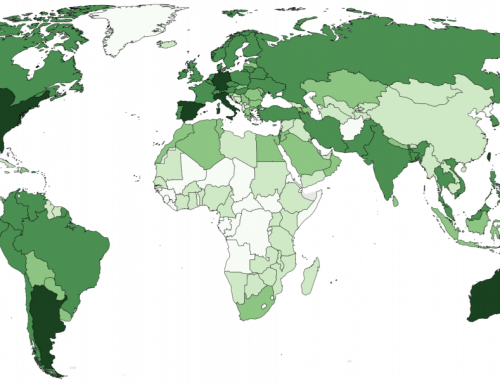(Click to see full image)
This graphic visualises the role that language plays within the reproduction of academic knowledge in scientific journals. This visualisation segments academic journals by language and country and shades each country by the average impact factor of the journals published within it.
Data
This graphic draws from the Thompson Reuters Web of Knowledge Journal Citation Reports. The data from Thompson Reuters contains journals in twenty-two distinct languages. The impact of a journal is calculated as the number of citations that articles in the journal received in 2008 and 2007 divided by the total number of articles published in the journal over the same time period. To maintain clarity, most countries that contained only a small number of journals were omitted from the visualisation.
Findings
This graphic highlights the dominance of the Anglophone sphere in academic publishing. English is a dominant language in academic publishing not only because of large number of journals published in the United States and United Kingdom. This visualization demonstrates that English-language journals are also published in much of the rest of the world (English accounts for 86% of academic journals in the dataset). While this dataset is not a comprehensive sample of all journals published in the world, the fact that the Web of Knowledge dataset is so important to institutional and individual rankings in academia only serves to reinforce the dominance of the English language within the sciences and social sciences.
Visualization and analysis by Dr Mark Graham, Scott A. Hale and Monica Stephens in collaboration with Dr Corinne M. Flick and the Convoco Foundation.
This map is taken from the following publication: “Graham, M., Hale, S. A. and Stephens, M. (2011) Geographies of the World’s Knowledge. London, Convoco! Edition.”




